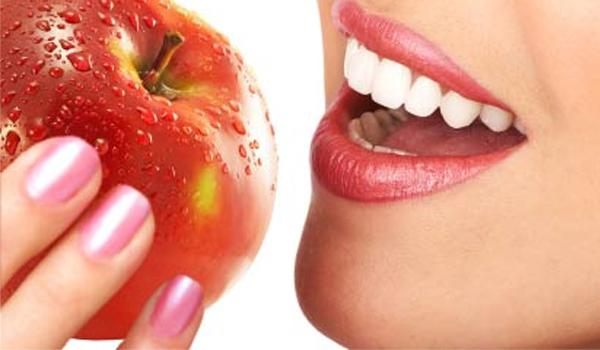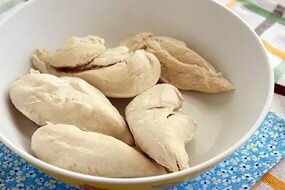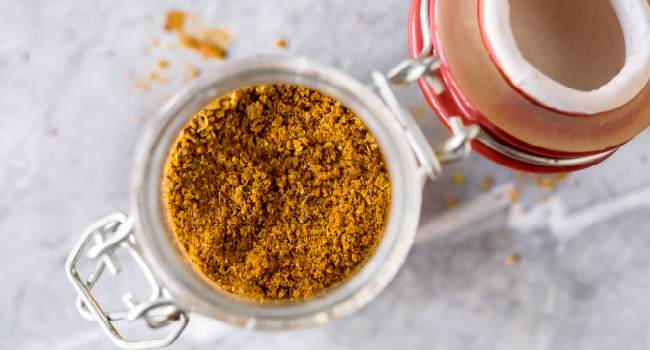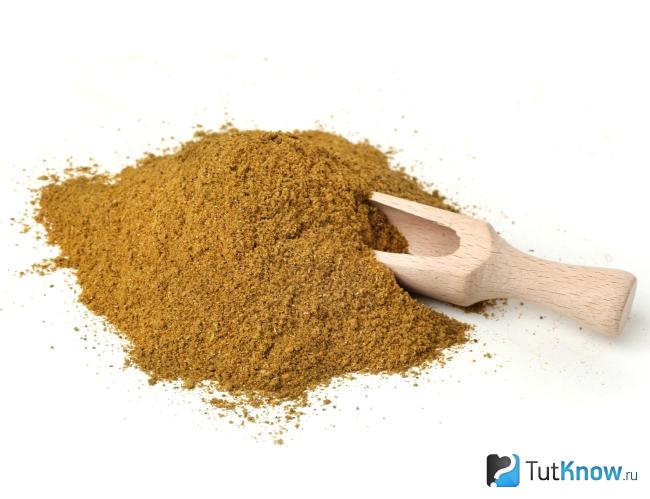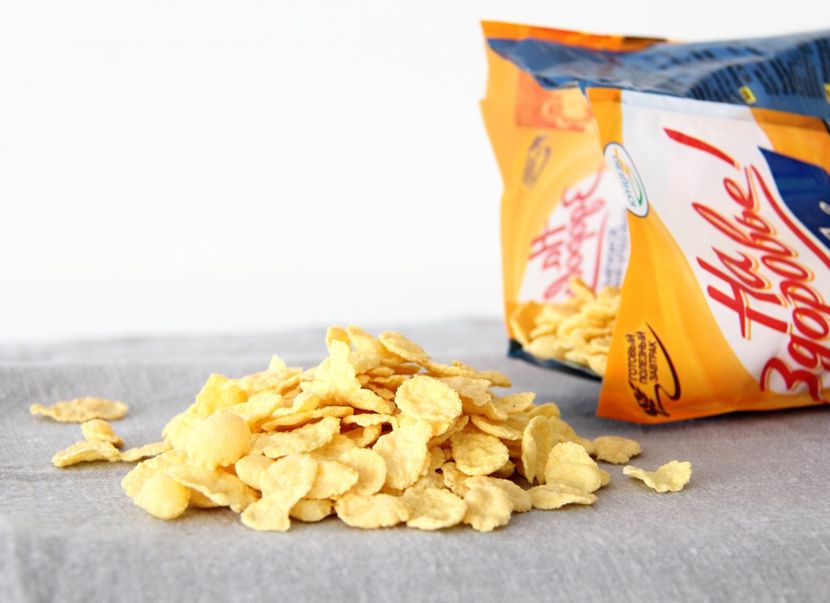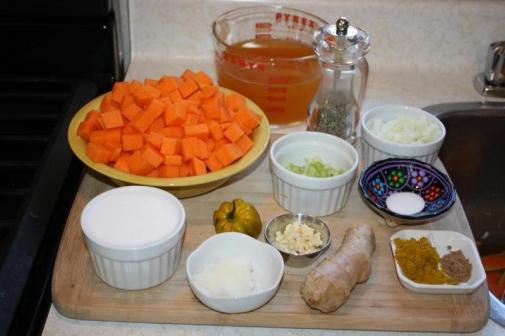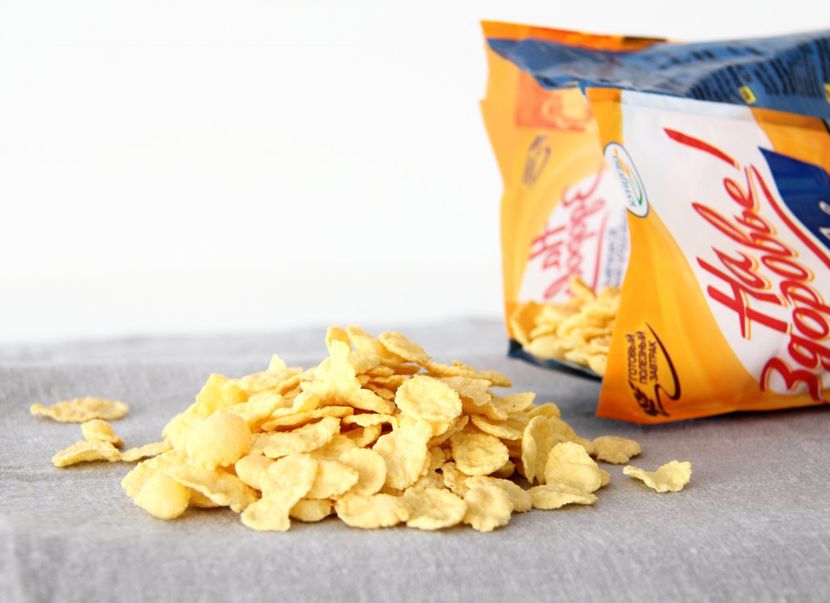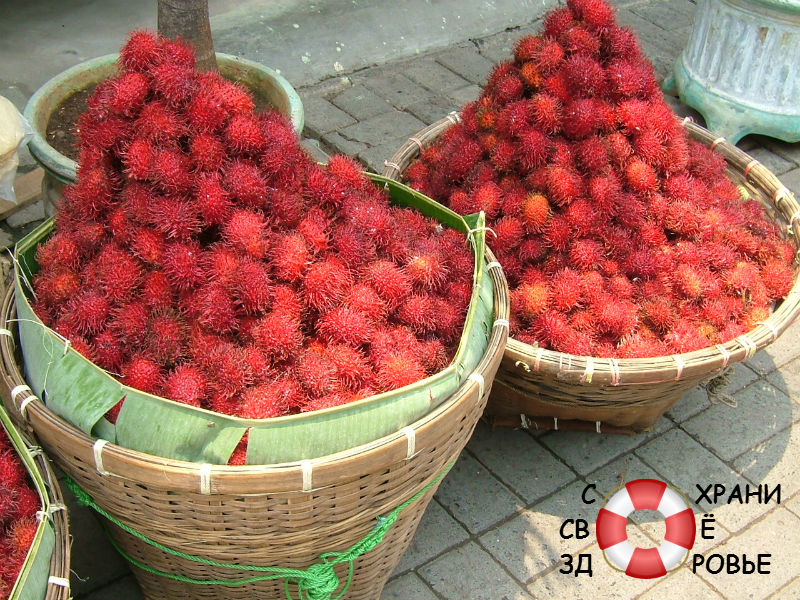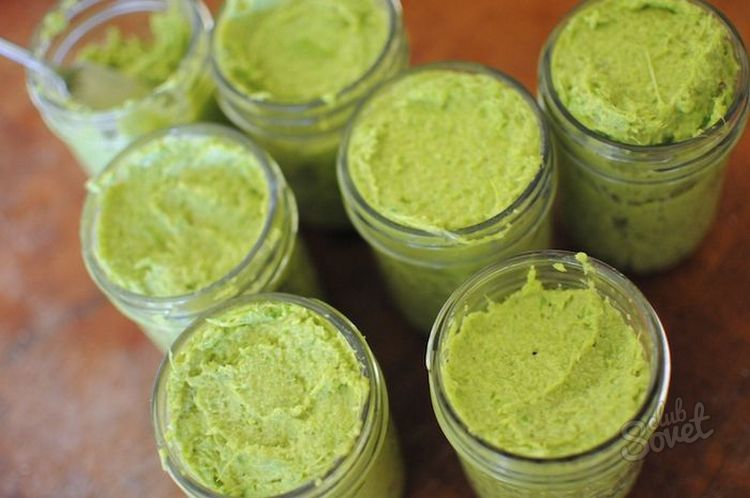Rambutan: features, properties and tips for use. What is rambutan? Description, useful properties
Rambutan is an example of true exoticism: the unusual taste and the appearance of a “hairy” type of fruit will alert everyone who is used to bulk apples and rosy. But in Southeast Asia, they love and revere rambutan, add romantic legends about it, prepare national dishes, and sell medicines from it in pharmacies. It is no coincidence that many tourists from Thailand take home not only magnets and beach dresses, but also spectacular bouquets with rambutan.
A bit of history
For those who have never “seen” rambutan live, the photos will show a strange shaggy fruit that looks like a small hairy egg. But behind the frightening outer shell is a flesh of creamy color and delicate taste, reminiscent of green “ladies' fingers”.
The homeland of the hairy fruit is Asia, but now rambutan plantations can be found in almost every country with a tropical climate. The leaders in the production and export of this eastern miracle are Thailand, India and Indonesia. Rambutan was actively discussed in the 18th century, when the Thai king Rama II sang the fruit in his treatise, noting that the fruit was ugly outwardly, but wonderful inside. It was this rambutan unusualness that resonated in Asian traditions and myths.
One of the most romantic Thai legends - the eastern version of “Beauty and the Beast” - tells of Prince Sang Tong, who, for unknown reasons, hid his face under the mask of rambutan and himself looked scary, dark and hairy. But the king’s beautiful youngest daughter, exactly the insightful Belle, caught sight of the prince’s allure and his good heart, and wanted to marry him. After the wedding, the young queen was rewarded a hundredfold - the prince really turned out to be smart, gentle, and even rare handsome.
How to grow rambutan at home?
Shaggy fruit grows on tall spreading trees from 4 to 25 meters; when ripe, it actively changes color - from bright green to orange and bright red with green hairs. Rambutan grows very unusually - Wikipedia says that on the trees the fruit gathers in large hairy clusters of up to 30 pieces. Given that sometimes the diameter of the fruits reaches 4-6 cm, you can imagine how this tropical crop looks on the branches ....
The good news for extreme gardeners is that you can actually plant a fluffy tree at home, it will not break through the roof, but will easily adjust to the height of your ceiling. It is easy to grow rambutan at home from an ordinary seed, but first check its fertility. To do this, the bone must be wrapped in a wet cloth, closed in a container and hidden in a dark place. If in 10-14 days sprouts appeared on it - everything is in order, you can plant homemade rambutan.
An exotic tree loves warmth and humidity, so the best place for it is an insulated balcony, a home greenhouse or just the sunniest room. To begin with, they dig a bone into a small container, after 2-3 months, when the oriental plant reaches 3-4 cm, you can move it into a larger pot. The main thing - do not forget to spray and water the rambutan well, even better - install a humidifier in the room. With proper care, after 3-5 years, the Asian guest will give her first hairy crop.
What is a hairy fruit good for?
Unlike many other tropical fruits that are ready to save you from literally all diseases (vitamin, etc.), rambutan is a fruit of a narrower focus. But this does not make it less useful, on the contrary - in its "sphere" the furry oriental miracle works wonders.
Asians have long appreciated the ability of rambutan to heal the stomach and intestines - the fruit relieves stomach inflammation, stops mild indigestion and diarrhea. But if you decide to use this folk remedy on vacation, be careful - first eat half of the fruit and make sure that the body reacts normally to exotic, otherwise you can get the opposite effect.
And rambutan is an excellent skin remedy! Thai beauties love to use elastic flesh for cosmetic masks, and many tourists agree with them. Rambutan masks return freshness and elasticity to the face, but there is a little secret - the same effect can be achieved if you just eat 3-4 hairy balls of rambutan a day for a couple of weeks.
Rambutan has another amazing advantage - its useful properties and contraindications have been known for a long time, and there are practically no last ones. If you have never tried an unusual fruit, start with small doses, and if the stomach is satisfied, then you can enjoy rambutan in any quantity - there will be no harm.

It’s a pity that in Russia in the rambutan market it’s not like that in baskets
How to choose and eat rambutan?
Unlike protected by law, rambutan can be easily taken out of the country after a vacation and brought as a gift to friends. Especially for curious tourists in Thailand, rambutan twigs are bundled into small bouquets - romantic and comfortable.
It is very simple to choose a hairy fruit in any eastern market - ripe fruits on the shelves do not stale. In Russian supermarkets, the situation is more complicated - you can run into an overripe or spoiled fruit. The correct rambutan is a bright red color, without cracks and spots, with fresh greenish hairs.
Many people are confused by the unusual appearance of the fruit, and the question arises: rambutan - how to eat this shaggy miracle correctly? On a ripe fruit, it is easy to find a thin seam along the skin: walk along it with a knife, and the fruit can easily be divided into 2 halves.
An important tip is that inside rambutan there is a bitter inedible seed, and you need to eat fruit carefully so as not to bite off the nasty seed inadvertently.
Rambutan is stored in the refrigerator for only about a week, so it is best to eat fruit immediately after purchase. The scattered rambutan looks a little scary - a dark hairy skin from which a circle of translucent pulp peeps.
Rambutan Recipes
In eastern cooking, rambutan is quite popular: fresh creamy pulp is added to cocktails and salads, and meat roast is prepared. In Asian stores you can find canned rambutans, marmalades and jams.
Our housewives adapted to use rambutan in the usual Russian recipes. This is what the crab salad with an exotic slant, beloved by many, looks like:
You will need: packing crab sticks 200 g, boiled rice 100 g, 500 g fresh or canned rambutans, some greens and mayonnaise.
Finely chop all the ingredients, mix and season with mayonnaise (sour cream). Top decorate or basil.
Children's party and romantic dinner will be decorated with rambutan ice cream.
You will need: 100 g of any ice cream, 4 slices of pineapple, 4 rambutan,.
Put the ice cream in a bowl, along the edges - slices of rambutan, pineapple on top. Sprinkle with cinnamon and serve.
Unusual for us, but definitely noteworthy, exotic rambutan fruit, for residents of many countries in Southeast Asia, the fruit is affordable and widespread, almost like apples. What is rambutan, how is it eaten and what is its use, our today's topic.
The most interesting thing in rambutan, of course, is its appearance, this is the real exotic. Round plum-sized fruits, protected by a thick peel with many hairs, like an edible chestnut. The skin color of rambutan can be red-orange, red or just orange, but the flesh is always white.
Rhabmutan fruit - what is it
Rambutan is an evergreen tree from the Saputov family that grows mainly in Southeast Asia. Reaches a height of 25 meters, its leaves are oval, the flowers are very small, and fruits with a diameter of 4-6 centimeters are covered with dense hairs. It is because of these hairs that they got their name, because “rambut” in Indonesian also means “hair”.
So, rambutan fruits grow in clusters and change color as they ripen - first they are green, then yellow and the ripened fruits take on a rather intense, attractive red color.

The peel is easily removed, it is not prickly, as may appear from the photographs, the flesh is white, juicy, and in the center has a small bone of dark brown color.
In terms of consistency, and in appearance, the flesh of rambutan is very similar to the flesh of lychee fruit, however, their tastes differ. Rambutan has a sweet taste with a slight acidity and a pleasant aroma.
Calorie content. The pulp of one bambutan fruit has about 60 calories. This is quite a bit when you consider that it is rich in fructose, vitamins and minerals.
To date, rambutan is cultivated in Malaysia, Indonesia, Thailand, Sri Lanka, Australia and India, Central America and Karaibakh.
How to eat rambutan
The peel of rambutan must be removed before use, as it is inedible. To do this, either cut it with a knife, or press it with your hands a little, and after a crack appears, with your fingers divide the peel in half and remove it. There remains a white pulp with a bone inside. Raw, the bones are toxic, and fried can be eaten.
Basically, of course, rambutan is eaten fresh, but in many countries it is canned in syrup, as well as pineapple, sometimes together with other fruits, they make desserts, jams and compotes.
It is believed that rambutans are best tasted if they are collected and eaten in the summer, from June to the end of August. The unripe fruit, the flesh sticks to the peel, and they are sour, but still the taste is good.
A short video instruction on "How to eat rambutan"
The beneficial and healing properties of rambutan
When it comes to beneficial properties, nature has not deprived this interesting fruit of its attention. In the countries of Southeast Asia, it is very appreciated for a large number of vitamins, minerals, oils and natural acids.
Composition:
- Water - 78%
- Calories - 82 per 100 grams
- Protein - 0.65 grams per 100 grams.
- Fats - 0.21 grams per 100 grams.
- Carbohydrates - 21 grams per 100 grams of pulp.
Minerals: Calcium, Iron, Magnesium, Phosphorus, Potassium, Sodium, Zinc.
Vitamins: C, A, thiamine, riboflavin, niacin, vitamins B6 and B12, folic acid,
Rambutan is a good source of vitamin C and calcium, and it also contains enough niacin, a substance that is also known as vitamin PP, nicotinic acid, or vitamin B3. Niacin is an organic compound that is very important for our body, which is involved in many processes in every cell, and modern medicine considers nicotinic acid as a medicine.
A lack of niacin in the body can lead to the development of many serious illnesses. This situation is especially dangerous for children who need all the vitamins and elements for normal development.
- Due to its high content of antioxidants, regular consumption of 7-8 fruits per day will improve the body's resistance and its ability to destroy cancer cells.
- Those who ate rambutan regularly for at least 2 weeks, report a marked improvement in skin condition.
- From its pulp, Thai women make face masks, they are sure that these masks rejuvenate the skin and make it beautiful.
- These fruits are recommended for those who need the restoration of body strength.
- The consumption of rambutan perfectly strengthens the immune system and reduces the risk of developing cardiovascular diseases.
- In Thailand, this fruit is included in diets for people with high blood pressure, diabetes.
- The combination of iron and copper with vitamin C improves the absorption.
- Due to the content of phosphorus and enzymes, with regular consumption of rambutane they are almost purified, their work improves.
- It is a good source of vegetable calcium. There is not so much of this element in rambutan as sesame seeds, but given how calcium is moody in assimilation, any source is good.
- And last but not least, it should be noted that rambutan is an excellent assistant for those who want to lose weight.
Oil is squeezed from the seeds of the rambutan fruit, which is used in the manufacture of cosmetics, aromatic mixtures, and especially candles, since it emits a very pleasant aroma when heated.
The healing properties of rambutan
Fresh rambutan is eaten for indigestion, indigestion, diarrhea, and even dysentery. It is believed that they can calm the irritated intestines, improve digestion and overall well-being.
How to choose and store rambutan
When choosing these exotic fruits, first of all pay attention to its color. Ripe rambutan has a bright red peel, spiky, green hairs at the tips. It is important that the fruit does not have cracks and cuts, dark areas.
Hair should not be dry, this fruit may have ripened, or lay on the counter for a long time and began to deteriorate.
Rambutan is stored in the refrigerator for no longer than 7 days.
Despite the short shelf life, due to the gained popularity, rambutan in small quantities is exported to different countries of the world. Here you can find these fruits only in some stores and at a rather high price, because it is very cherished during transportation.

The best, of course, is rambutan in the countries where it is grown, because there it is the most delicious and costs a penny. Therefore, going on a vacation to Thailand, do not forget to make a list of all purchases and local fruits you would like to try.
Contraindications and harm
To date, this fruit has no known contraindications, however, allergy sufferers should always be careful, and in general, any exotic fruit should only eat a small amount for the first time, in order to make sure that there are no negative reactions to its composition.
Growing at home
In our area, rambutan does not grow, but the good news is that it can be quite successfully grown as a houseplant, and even after a few years to collect fruits.
How to grow rambutan at home? Very simple, planting technology is no different from planting flowers. The main thing is that the bone is good, from ripe fruit.
Before moving on to cultivation methods, you need to know some aspects:
- The air temperature in the place where rambutan grows cannot fall below 10 degrees Celsius.
- Caring for a rambutan tree is no different from caring for any other indoor plants.
- Many complain that rambutan first begins to grow rapidly, and then abruptly sneeze. The fact is that they like moist air, so some create special conditions for them, akin to greenhouse ones.
- Leaves need to be constantly sprayed with water, make sure that both the soil and the environment are moist.
- At the age of 6-8 years, rambutan needs a tub of 60-70 liters, since his roots develop strongly.
- The first fruits are expected only in 6-8 years.

There are 2 options for growing rambutan at home:
- The seed is first germinated. Wrap in a piece of wet tissue, place in a closed container and constantly monitor so that the fabric does not dry. After 10-15 days, the bone will crack and the first root tip will appear. Now they take a pot of earth, on which drainage is laid. The stone is placed in the ground 6-7 centimeters in depth. Next, you need to make sure that the earth is wet all the time, and within a month the escape will show itself. Now, if necessary, it will be necessary to change the pot to a larger one.
- Bones are laid in moist soil without first germination. This method is simpler, if the bone is good, then there is no reason why it will not escape, so more practical people choose this option.
Rambutan fruit is certainly interesting and noteworthy. The sweet and juicy fruit has not in vain gained such popularity in Asia, if possible, be sure to taste it and share your impressions.
- Pitahaya (dragon fruit) - how to eat, wholesome ...
Widely known in eastern countries. For us, its name is not quite familiar. However, this fruit is popular in a number of countries because of its juiciness and wonderful taste.
Where does rambutan grow?
Starting a conversation about what rambutan is, I would like to note that this is a tree from the sapinda family. It grows in a tropical climate. Trees of this species are quite actively grown in Thailand, Indonesia, Malaysia, as well as in Southeast Asia. But at the same time, in every country, culture has its own name. In addition, rambutan is still popular in Australia, Africa, the Caribbean and Central America. However, the largest rambutan plantations are in India, Cambodia, Sri Lanka, the Philippines, and Indonesia.
What do the fruits look like?
Speaking about what is rambutan, it should be noted that the fruits of the tree are of the greatest interest. They are the size of a hazelnut, while collected in clusters (up to thirty pieces). The rambutan bone located inside the fetus is not at all attractive. It resembles an acorn to taste.
The indigenous people of Thailand love rambutan and tell many beautiful legends about it. And in August a holiday dedicated to this is annually held. Although outwardly it is completely unattractive. Due to the existence of a large number of varieties, it is even difficult to describe it. The tree is usually stunted, but there are both evergreen and deciduous forms. The fruits themselves may take the form of berries or fruits. Outside they are covered with a prickly skin, under which on the bone there is juicy pulp.
The peel of the fruit can be red, yellow or red-yellow, and even burgundy. Outwardly, the fruits are similar to our chestnuts, only have a different color. To try a delicious fruit, you need to remove the spiny shell and get a white gelatinous flesh.
In addition, rambutan is a fruit (the photo is given in the article) is very useful, it contains iron, protein, carbohydrates, nicotinic acid, vitamin C, phosphorus.
Because of the thorny shell, rambutan is sometimes called a “hairy”. When purchasing such a fruit, first of all, you need to pay attention to its color. Connoisseurs believe that they should have a rich red color, and the tips of the thorns themselves should be green. Rambutan is a perishable fruit; it can be stored in the refrigerator for no more than seven days.
Legends of rambutan
It is generally accepted that rambutan is a Malaysian fruit, since the name of the tree comes from the Malaysian word, which means “hair” in translation. In the countries of South Asia, it began to be cultivated many centuries ago. Gradually, he gained universal love. Glory came to him in the eighteenth century, when King Rama II himself devoted an entire ode to this wonderful fruit.

Around the rambutan there always reigned a certain areola of mystery. More than one beautiful legend has been built about him. In particular, one of them tells about a prince who wore a terrible mask of rambutan, and after the wedding he turned into a real handsome man, thanks to the fact that the princess fell in love with him for a beautiful soul.
Another, no less beautiful legend tells of how rambutan found himself in Thailand. The Malaysian prospector, who mined tin, moved to Thailand and settled in the south of the country. He took five rambutan trees with him. He planted seedlings in a new place, when they first yielded fruits, some of the fruits were yellow and some were red. They differed in taste. Some were bitter, while others were sweet. And only one tree bore fruit with spiny red fruits, inside of which there was an incredibly juicy white pulp. After some time, the prospector returned to his homeland, and after him there remained a whole garden of unusual rambutan trees. Over time, the grove was acquired by the Ministry of Education. A school was later built in the same places, and trees began to be called school rambutans. The king himself is the patron saint of an unusual tree, not to mention the popular love of fruit.

It is worth noting that it was the support of the king that made rambutan currently one of the most popular fruits in the whole country. A crop worth about $ 12 million is harvested annually. Also, every year in August, people celebrate a holiday dedicated to school rambutan, rejoicing at the luck brought by the first five trees. Here is such an unusual story has a miracle fruit.
Useful properties of exotic fruit
Speaking about what rambutan is, one should certainly remember the useful substances that it contains. These are vitamins B1, C, B2, proteins, carbohydrates, protein. And of the minerals it contains iron, phosphorus, calcium and nicotinic acid. Also in small quantities in the fruit is nitrogen, magnesium, ash, sodium, phosphorus, potassium, zinc and manganese.

The taste of the fruit
Rambutan is very useful for the body, it improves the digestion process and has a beneficial effect on the skin. In Thailand, it is believed that the fruit helps sick, weakened people, because it has nourishing and cleansing properties.
Rambutan, lychees are somewhat similar in taste. They are replaced by each other in cooking. Rambutan can be eaten not only fresh, but also canned. Often it is used as one of the ingredients for making salad. Local residents make sauces, jams, compotes from fruits, which they then use to make pies, etc. In addition, rambutan gives a special flavor to chicken, fish and meat.

But the leaves, roots and bark of rambutan are widely used in folk medicine, as well as in the manufacture of paints for fabrics. In Malaya, dried fruit peels are sold in all pharmacies as a remedy.
The healing properties of the fetus
In its raw form, the fruits are used to treat diarrhea and dysentery. Fragrant pulp calms the inflamed intestines well, stopping the process of improper digestion of food. However, if the stomach is unfamiliar with the fruit, then it is dangerous to use it to treat intestinal problems; it is not known how the body will respond to the new fetus.
The leaves of the tree are used to prepare poultices for headaches. The effect of the method has not yet been studied, but the Thais willingly use it. In Malaysia, the peel is used for the manufacture of various medicines. It is dried and stored until a new crop. A decoction of the roots of the tree I use for fever. Tinctures are also prepared from the bark, which help with diseases of the oral cavity (stomatitis, abscesses). Such a decoction is even recommended for use by young mothers who recover after childbirth. Local residents claim that eating five fruits every day can reduce the risk of cancer. Rambutan effectively lowers blood pressure.
Fruit contraindications
The first acquaintance with a new exotic fruit always begins with a small amount, since it is not known how the body will react to it. The stomach and intestines of each person have an individual sensitivity. In addition, an allergic reaction is possible. Otherwise, there are no contraindications to the use of fruit.
Rambutan on the windowsill
Exotic lovers will be interested to know that it is possible to grow rambutan at home from seed. This method is the simplest and most effective. If you create proper care for the plant, then you can get the fruits.

To get seed, you need to get a seed from a ripe fruit and dry it thoroughly. Then it should be placed in a damp cloth, and put the container with it in a warm place. A seed should be sprouted. To do this, moisturize it daily. In a few weeks it should germinate. Then the sprout can be planted in a pot with the mixture.
A drainage layer is put at the bottom, the nutrient mixture is poured on top. The seed is deepened and covered with earth. On top of the pot is covered with polyethylene to create a greenhouse effect, and cleaned in a warm, bright place. Water the plant as the soil dries. Shoots should appear in a couple of weeks. And after a few months, the sprout will reach four centimeters. When the plant grows, it can be transplanted into a larger pot. The sprout should not be planted in open ground, since this culture is thermophilic. In the middle latitudes, rambutan is grown either at home or in greenhouses.
Care Features
Tree cuttings brought from tropical countries practically do not take root with us, so growing a plant from seed is the most acceptable option. If you do not have the opportunity to bring ripe fruit from the same Thailand and take seed from it, then you can choose a ripe fruit in the store and try to sprout its seed.
It must be remembered that germination is quickly lost, therefore, the fruit should be cut immediately before planting. To increase the likelihood of germination, you can soak the seed in a growth stimulator.

Water the plant once every three days. He needs to provide the maximum amount of sunlight, but without direct rays. To maintain humidity, you need to spray the plant, because it has a tropical climate with high humidity. The plant does not require any special conditions, so careful care for it is not necessary.
Instead of an afterword
Rambutan is a tropical plant with a rich history. If you have the opportunity, be sure to try it. Still, it is interesting to taste the fruit, which is so revered in Thailand.
Kiwi and avocado have already ceased to be absolute exotic in Russia. But gradually new fruits come that are not yet familiar to people. One of them is rambutan, which we will talk about in more detail.

What it is?
Rambutan literally translated from Malay means "hairy." This name exactly matches the appearance of an exotic fruit. It grows on an evergreen tree. The fruit itself has a jelly-like consistency. So far, rambutan has not been exported from Malaysia, so the chances of trying it anywhere except in Southeast Asia are approaching zero.
The plant has another name - nephelium. The fruit is usually colored bright red, occasionally in raspberry color. Rambutans grow in the form of clusters. If you cut off the peel, a translucent, pearl-colored flesh will be found. However, it can only be called pulp conditionally - the difference between rambutan and lychee is just related to the hardness of the core.
The fruit has a sweeter taste than lychee. It is easy to notice, however, a slight sour note. The ripened fruits always differ in juiciness, contain quite a lot of seeds. Rambutan can be cleaned without a knife or any other sharp object. Although the fruit looks like it is covered with thorns, the hairs are by no means stiff, they are easily bent.
Those who have tasted rambutan note that it feels like grapes. And this feeling is not accidental. Malay fruit also helps to fill the lack of moisture. Thick skin protects the inside of the fetus from contamination. This property is very valuable for tourists who do not want to take risks, being away from the water supply.

How and where does it grow?
Exotic tree can reach 25 m in height. It forms a spreading crown. Rambutan is found in almost all states of the tropical zone. It grows even in Australia. However, Thailand occupies a leading position in the international market. It should be noted that rambutan reaches a height of 25 m only in favorable conditions. Usually it is limited to 6-7 m. Many branches develop on a tree. The fruits look like chestnuts or walnuts, the shape is a circle or an oval. The largest fruit size does not exceed 6 cm.
The peel of rambutan is relatively dense, and when the fruit ripens, the color becomes only more saturated. Harvesting fruit in the tropics is harvested in July and December. Breeders managed to breed up to 200 varieties that have fruits of various sizes and colors. The main focus in breeding work is to reduce the height of the tree - so far it has been possible to reduce it to 4 m. A number of varieties whose fruits are seedless have been developed, however, it is worth noting that the taste of seedless rambutan necessarily becomes acidic.

Taste and composition
The pleasant taste of rambutan is not its only advantage. The fruit pulp contains many vitamins, especially ascorbic acid. Also, the Malay fruit is saturated with B vitamins. The concentration of mineral components is also high:
- copper;
- calcium
- potassium;
- zinc.
In addition to these components, rambutan contains a lot of magnesium. Up to 100 mg may fall in 1 fetus. Yes, to make up for the daily requirement, you will have to eat quite a lot of fruits. But in hot, sultry weather, this happens by itself. Good rambutan and a high concentration of iron.
The pulp of the fruit is quite rich in phosphorus. Per 100 g of product accounts for 4.3% of the daily value. For 100 g of the product, 2 g of fiber. Moreover, in the same mass of pulp contains no more than 60 kcal. Low calorie content along with high fiber and water content recommend rambutan for weight loss.
The properties of the fruit make it a useful element in low-calorie diets. Successfully suppressing hunger helps prevent disruptions. According to experts, rambutan seeds also give a good effect on weight loss. It is best to swallow them in crushed form, in combination with other foods. Raw seeds can only be consumed in extremely small quantities.


Benefit and harm
The beneficial properties of rambutan have been actively used in traditional medicine in Southeast Asia for hundreds of years. Centuries-old experience along with the results of biochemical studies allows us to confidently say that this plant helps:
- diabetes patients
- suffering from high blood pressure;
- people with impaired immunity.
A high concentration of antioxidants in the skin can slow down the aging process. No wonder specialized companies and online stores are increasingly starting to supply extract from the peel of the Malay fruit. But the useful properties of the rambutan shell do not end there. The gallic acid contained in it successfully suppresses microorganisms. Even if they have already attacked the cells of the human body, this substance acts as sparingly as possible, without exacerbating the damage.


According to recent studies, gallic acid, together with other substances contained in the fetus, effectively fights microbes, viruses, and even pathological fungi. Thanks to the presence of phosphorus, kidney excretion of various wastes is facilitated. This trace element also contributes to the restoration of damaged organs and tissues. And if they are completely safe and sound, phosphorus will help prolong this situation. There is evidence, although not fully confirmed, that swallowing rambutan seeds improves the condition of diabetics.
A hairy fruit contains a lot of carbohydrates and proteins. This combination provides almost instant replenishment of the energy level. And if you take into account the juicy flesh, this fruit can be safely recommended for those involved in sports and physical education. Thanks to the presence of copper, rambutan helps improve blood formation. And this function of the body is equally valuable for those engaged in physical and intellectual labor.
A significant amount of manganese can increase the production of enzymes and increase their activity. Due to this, biochemical processes in the body will go faster, become more complete. The combination of phosphorus, calcium and iron helps to strengthen musculoskeletal tissue. As a result, the risk of a fracture is reduced, and if it does occur, healing is accelerated and facilitated.

Rambutan enhances the motility of the final sections of the gastrointestinal tract. Therefore, the risk of constipation is reduced. But it is with this circumstance that the main contraindication of tropical fruit is connected. It is not recommended to use it suffering from diarrhea, including those subjected to food poisoning. The systematic use of rambutan improves the condition of the skin, and masks for rejuvenation are even made on its basis.
The seeds of the Malay fruit are used to produce a unique oil. This natural liquid is in demand in the manufacture of cosmetics, shampoo and even soap. It is noted that rambutan oil inhibits hair development. That is why it is appreciated by those who often do hair removal. It should be noted that no more than 8 fruits can be consumed per day.This is the maximum amount that only perfectly healthy people can afford.
If there are at least minor health problems, it is worth bringing the daily portion to a maximum of 5 rambutans. It is recommended to avoid the consumption of seeds that have not undergone heat treatment. Otherwise, they turn out to be bitter, and even contain substances with a narcotic effect. Toxins are also concentrated in the peel, because it, like seeds, should be used carefully.


How to eat it?
To eat the rambutan fruit, you must be able to clean it properly. You can make an incision of the peel with a knife and carefully remove it. But often they dispense with any knife, simply pressing on the surface. One side cracks, after which it is possible to extract the fruit. A bone can be thrown away - and that's what most people do.
But it’s much more correct to do, as is customary in Asian countries. There, these bones are fried and eaten. As for the storage of the Malay fruits themselves, even in the refrigerator they will lie for a maximum of 7 days. Despite the benefits of raw rambutans, they are often used to:
- processing for jam;
- jam cooking;
- making sauces.
Alternatively, the pulp can be preserved with sugar. The fruits of rambutan are used as part of a number of exotic dishes, including dessert. Experienced chefs advise stuffing them pies. The Malay fruit gives an excellent sensation in combination with ice cream. And from it you can cook excellent compote.

How to choose and store the fetus?
The excellent quality of rambutan can be enjoyed only if you choose it correctly. It is unacceptable to buy fruits whose skin has spots, especially - dents or scratches. Almost always, brown fruits are stale. A quality product is distinguished by the greenish tone of the hairs. If they have lost their elasticity, you should also refuse to buy.
When rambutan is transported or stored at a temperature of about 0 degrees, it becomes darker and loses its taste. Recommended temperature is 7-15 degrees Celsius. In this mode, the fruit can be stored for up to 14 days. As already mentioned, you can choose either varieties with a stone or without it, but more acidic. Knowing these simple rules, you can choose guaranteed quality rambutan.


Growing at home
In order not to choose the fruits, at the risk of running into a marriage or a low-quality product, you can grow rambutan at home. It is also cheaper than buying imported fruits. Given the tropical origin of the plant, it is necessary to maintain:
- intense light (at least 12 hours per day);
- air temperature not less than 18 degrees of heat;
- high humidity in the room.
Residents of the southern regions of Russia can take a chance and try to grow a "tropical guest" in the open air. For this purpose, only areas reliably covered from the wind are suitable. There must be fertile land made of clay or loam. A prerequisite is also high-quality drainage. Moreover, in most of Russia, rambutan can only be cultivated at home.
A tree grown in a pot almost always has only a decorative function. But with luck, you can get fruits in season 5. Novice gardeners are advised to grow rambutan from seed, as this is the easiest option. And still, careful care will be required. The first step is to purchase at least a few ripe fruits of the tree.
transferred to heat. It must be continuously monitored so that the fabric does not dry. Increasing the chances of success is helped by treatment with growth-stimulating drugs. In most cases, sprouts appear on the 10-15th day of such treatment. Hatching seeds are immediately transplanted into a pot filled with a soil mixture. Recommended floral soil, 3 parts of which are mixed with 1 part of peat. It is advisable to lay the bottom of the pot with drainage material:
- broken ceramics;
- expanded clay;
- pebbles of a large fraction.
The bones are laid 2-3 cm into the ground. The container must be covered with glass or polycarbonate to achieve a greenhouse effect. She is being moved to a warm, sunny place. Watering is carried out, focusing on the dryness of the earth coma. Normally, the sprout comes out after 7-8 days, but sometimes you have to wait longer. After about 60 days, rambutan grows to 3-4 cm and gives the first foliage.
The accumulation of excess water in the pan leads to deformation of the roots of rambutan and threatens the appearance of fungal diseases. Yellowing of the foliage and stunting show that the tree does not have enough moisture. If you can’t transplant the plant, you need to replace the top of the soil in the tank at least once every 6 months and add humus. Strict adherence to these rules allows you to enjoy the pleasant appearance of the tree in the next few years. Rambutan is well undergoing pruning - therefore, you can improve its appearance on its own.
On how to eat rambutan, see the next video.
They say: “If you want to extend your life, eat at least one rambutan". Locals believe that the taste of only this healing fruit can convey to ordinary mortals the taste of ragweed - the drink of the gods. A garden planted with rambutan trees is treated like heaven on earth. The juicy fruits of such a respected fruit in Southeast Asia have an amazing aroma. Title " rambutan"Came from" rambut", Which is translated from the Indonesian language means" hair. "
The homeland of rambutan is considered to be Malaysia. Today, the plant is widespread in the tropical and subtropical zones of the planet. It is successfully cultivated in Thailand, Indonesia, Malaysia, Central America, the islands of the Caribbean and in Australia. In terms of rambutan production, Cambodia, the Philippines, Indonesia, India and Sri Lanka are considered world leaders.
Botanical description of rambutan
Rambutan (Nephelium lappaceum) - A tropical plant of the genus Nefelium, part of the Sapindov family. It is an evergreen fruit tree. Rambutan is a close relative of tropical fruits such as mamonchillo, longan and lychee.
Rambutan tree grows to a height of 10 meters. The top is crowned by a branched, sprawling crown. The leaves of rambutan are paranoid, consisting of 2-8 ovate or oval leathery leaves. It blooms with small flowers collected in panicle inflorescences at the ends of branches.
The rambutan fruit is oval or spherical, 3-6 centimeters in size. Fruits grow in large (up to 30 pieces) clusters. The peel of unripe rambutan has a green color, which, as it ripens, changes color first to yellow-orange, and then to bright red.
The rambutan pulp is gelatinous, white or reddish and aromatic. Its taste is sweet and sour, reminiscent of the taste of green grapes of a good variety. The pulp contains a brown oval-shaped seed up to 3 centimeters long.
Outside, the flesh of rambutan is surrounded by a dense peel, covered with curved hair at the ends, with hard hair-hooks. The length of light brown hairs is about 2 centimeters. The peel is easily separated from the pulp.
Most cultivated varieties of rambutan are bisexual, with much more female flowers on the tree than male flowers producing pollen. On male panicles, “colonies” are formed of three thousand small, pale green flowers, each of which contains 5-7 stamens with anthers, and yellow nectaries are in the ovule. Almost all rambutan flowers bloom in the morning.
Legends of rambutan

According to one of Thai legends, rambutan in Thailand appeared by chance. He was brought to the kingdom by a tin miner, who arrived in the town of Surat Thani in search of an easier share, either from Malaysia, or from China. He brought with him 5 seedlings of rambutan. A few years later, the tin miner was forced to return to his homeland, and his garden grew by itself, beginning to bear amazing and tasty fruits.
Years later, the Ministry of Education of Thailand acquired a plot with a garden and built a school there. Pupils began to look after the half-orchard garden, and the fruits from this garden were called “ngo rongrian” - “school rambutan” ... Soon the plant from the school garden spread throughout the kingdom.
The beneficial properties of rambutan
The Thai attitude to rambutan as a very healing fruit is due to the chemical composition of the fruit. Its pulp contains protein, proteins, phosphorus, calcium, iron, vitamins C, B1-2, nicotinic acid, ash, nitrogen, potassium, manganese, zinc, magnesium. The use of rambutan in food improves the digestive system, has a beneficial effect on the skin, fills the body with energy. In Thai medicine, rambutan leaves are used to treat headaches, and the pulp of the fruit is used as a powerful anthelmintic. A decoction from the roots of the rambutan tree is used to combat fever and prevent diseases of the oral cavity - inflammation, stomatitis and abscesses. In some countries of Southeast Asia, healers advise women to drink this broth after childbirth.
According to unconfirmed reports, the regular use of rambutan in food reduces the likelihood of cancer.
Is rambutan harmful?
There are no special contraindications for eating rambutan fruit. But you should not start acquaintance with this fruit by eating it in large quantities: it is not known how exactly your stomach will perceive exotic food.
Rambutan in cooking
Rambutan in Thailand is one of the most popular fruits among the local population. It is eaten raw, canned, boiled jellies and jams. Seafood restaurants often include seafood, including rambutan.
How to store rambutan
Rambutan - fruitvery sensitive to low temperatures. To avoid darkening and loss of taste, you need to store the fruit at a temperature of + 8 ... 12 ° C and humidity of about 90%. Under these conditions, the shelf life of the fruit will last up to 3 weeks.




